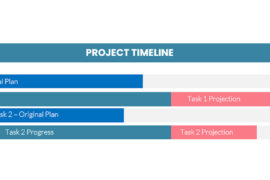 It’s this year’s hot topic – “Collaborative Project Management Systems” – but what exactly does it mean and how should we deal with the wave of collaborative pm software tools that are arriving on the market?
It’s this year’s hot topic – “Collaborative Project Management Systems” – but what exactly does it mean and how should we deal with the wave of collaborative pm software tools that are arriving on the market?
I mean it’s like saying you’re American but you just can stand for Mom or Apple Pie. Project Management is a collaborative process so it surely goes without saying that every project manager is in favor of a collaborative project management tool.
The problem is, that project management software vendors are in the market too and now that someone has coined the phrase, it seems that 100% of project management systems are now “collaborative” project management systems. Just how do you go about telling one apart from another and determining what collaborative functionality is important to you?
The first thing to deal with is to take a step back from your Internet-wide search of pm collaborative tools and think for a moment about where you and your project team need to be collaborating better. Collaboration can take a variety of forms.
Perhaps your projects are weak in the area of informing project team members, clients or sponsors about project information such as project progress, changes in strategy or targets etc. In this case, bulletin board type functionality or group email functionality might be important.
Perhaps you feel that a two-way feedback from team members to each other and/or to the project manager or client needs improvement. In this case an ability to chat on-line or to see who is currently available in an instant messaging type functionality might be of interest.
Perhaps you are moving a high volume of documents back and forth throughout the group and the management of key documents is what is slowing you down. Ok, so it’s document management functionality that you could use.
Perhaps the statusing of your project is arduous and some kind of update tool from the end users to the project system would make you more effective. Ok, then an on-line statusing and/or timesheet system would be what to look for.
Some clients have come to me and said, “But I need all of that!” why don’t I just buy an integrated-enterprise-wide-collaborative project management system?”
Of course in some cases we will find weaknesses in how a project organization collaborates at all and in this case all of these types of collaboration might be critical but it’s worthwhile to note that regardless of the functionality available from these collaborative tools, there is always a culture-change component to changing the way you manage your business.
For each of the scenarios above you can easily imagine how making such functionality available could inhibit the project process.
A wave of on-online chatting for example, with everyone talking to everyone about everything they think hour by hour with the project client joining in to experience perhaps for the first time the angst that can overwhelm a project team in mid-stream.
Or perhaps an ongoing stream of instant messaging requests that keeps a team member from having an uninterrupted thought throughout his or her day.
Changing the way we do business is something that has to take into account the shear momentum of how things are being done now. Change causes upset. It just does. Even if that change is for the better. There will be people more or less interested in change but the comfort of knowing how things are done today makes many people reluctant to abandon that method of doing business in favor of something else.
The best way to go about taking advantage of some of the new collaborative project management functionality is to start with what needs the most help. I was recently at one of the larger pharmaceutical supply companies in North America and found to my great interest that they had done exactly that. This firm had determined that document management was the most critical area that required improving. With all the regulatory requirements in the pharmaceutical industry, regulatory documents must often travel across countries, time zones and endure for a remarkably long time in good condition. Also, the security of these documents is critical to a successful regulatory ruling. It was the project management group but what they ended up selecting after a review of a number of project-specific tools was a document management system that was not originally designed for project work at all.
Of course that’s not for everyone and many of the project specific tools seem to be credible products but the point I’m making is that you’ve got to decide for yourself what element of your corporate culture you need to change before trying to automate it. Once you do, you’ll need to make a plan (I know, I know, project managers hate to plan their own systems) to implement that change that includes training, evangelizing and the use of course, of the software itself.




